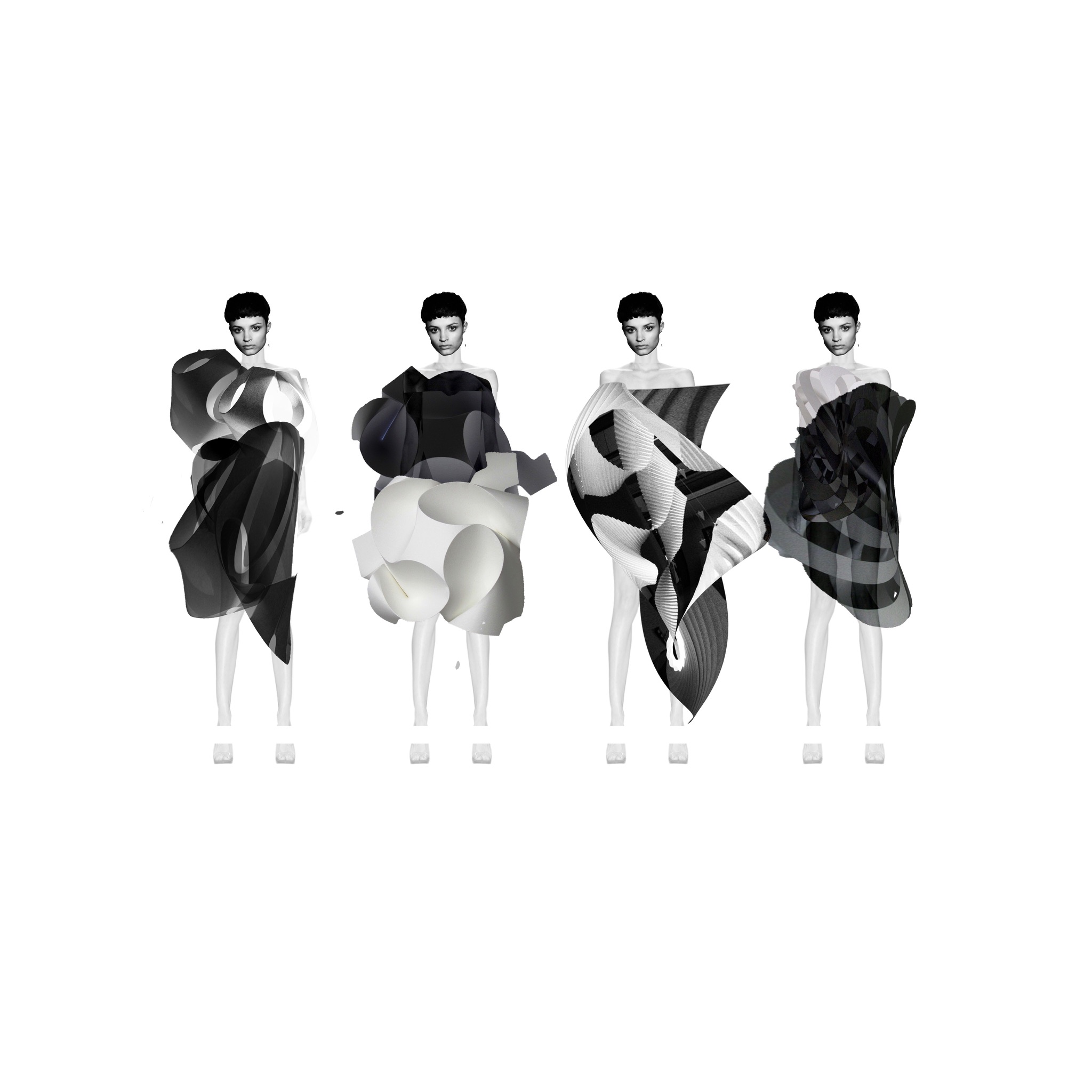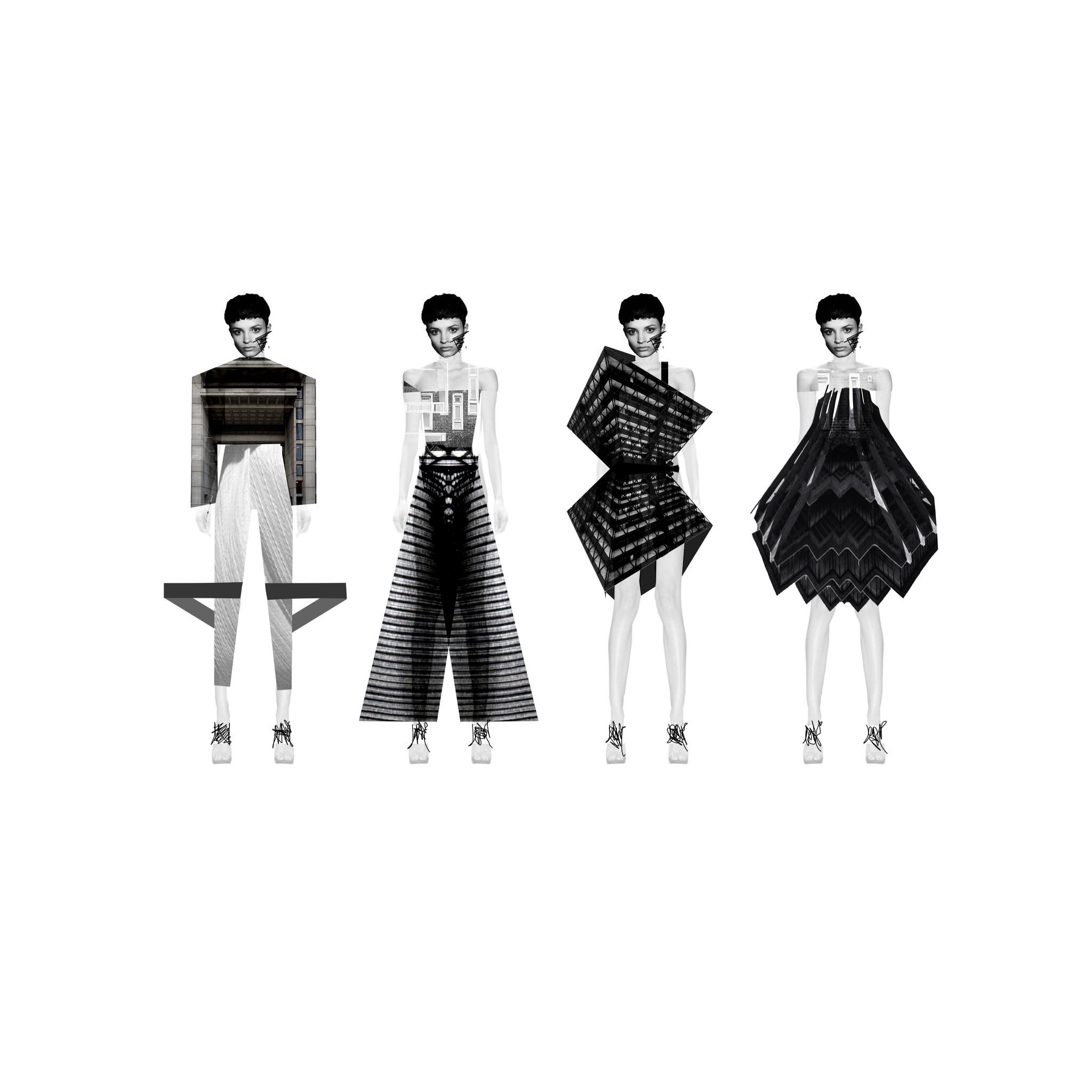
B R U T O
2018
Brutalist Architecture Vinyl, Mixed Media
Inspired by the movement that began after World War II to celebrate new possibilities and raw beauty soon became a symbol of rebellion. Brutalism became recognized as a structure that “bullies its observers into submission”

5
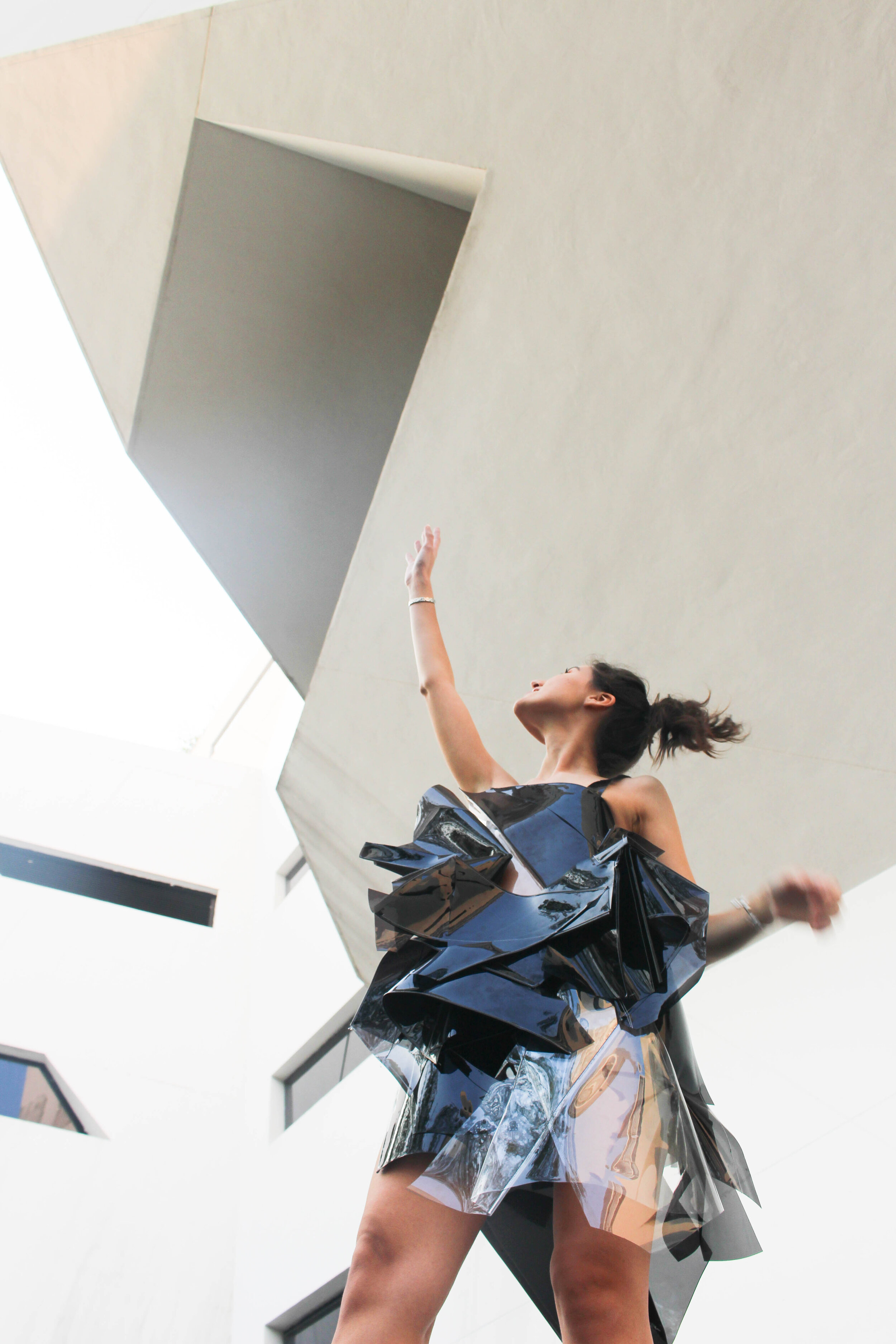

4


2

Fabric Board
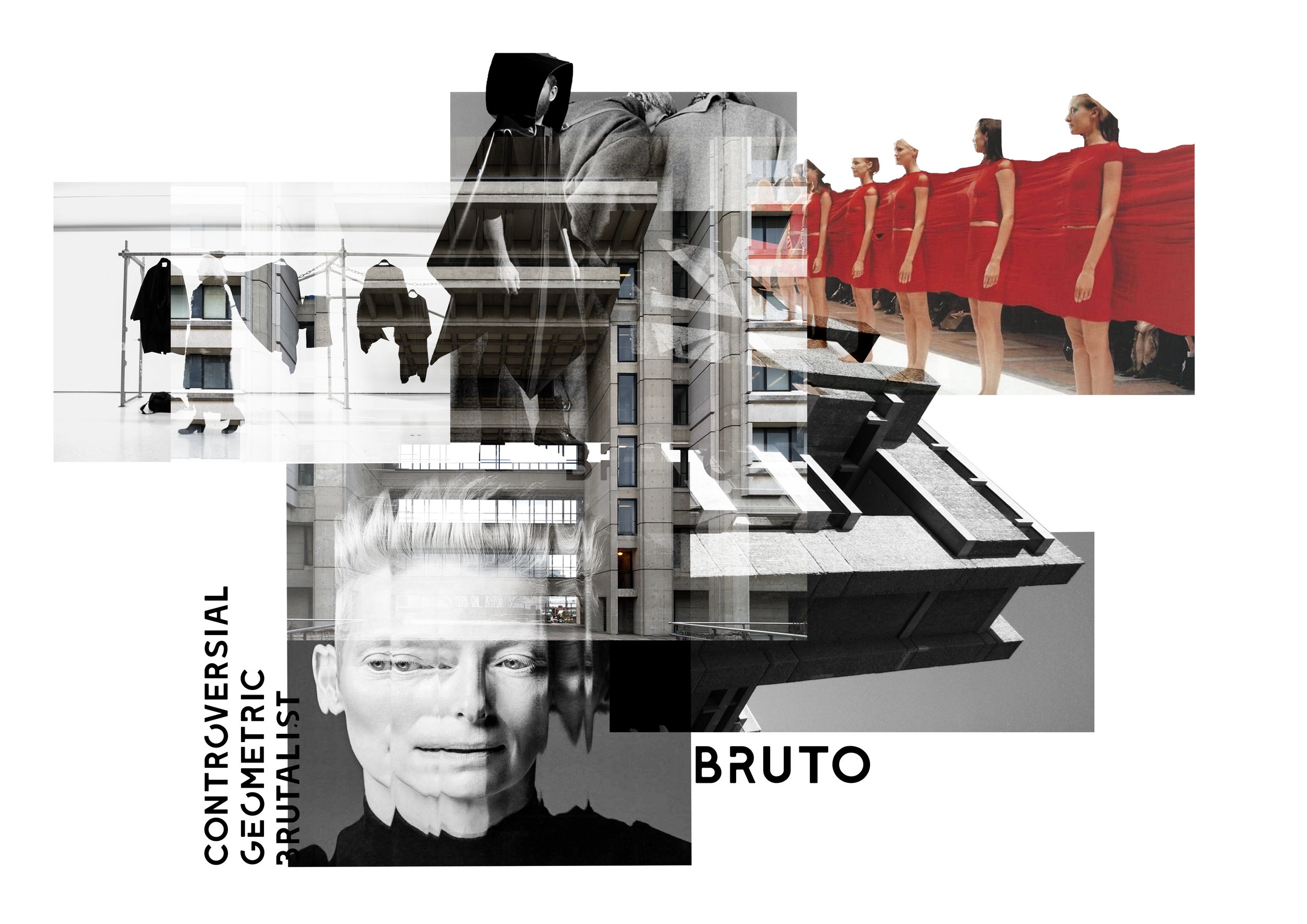
Concept
The movement that began after World War II to celebrate new possibilities and raw beauty soon became a symbol of rebellion. Brutalism became recognized as a structure that “bullies its observers into submission” (Mitchel) of unrestrained and raw quality. The grotesque name created with the intention of giving the movement a negative connotation was soon adopted by architects Alison and Peter Smithson as if to agree to the brutal nature of the massive works of art. Initially in the 1950s the idea was to build simple, block-like forms and raw concrete construction that represented post war optimism with limited resources. Post war fashion had a similar response to the circumstance, the lack of resources demanded fashion to become cheap, raw and minimalist. Utility clothes by law had to serve a purpose and feature simple lines and minimal trimmings, despite the condition designers managed to imitate the geometric nature of the brutalist buildings allowing rhythm and shape. Certain fashion designers and architects influenced by the brutalist movement developed works that ignited controversy, due to their individuality and ethic behind their products. Brutalism grew into an attempt to create ethic, rather than an aesthetic. It had less to do with materials and more to do with honesty: an uncompromising desire to tell it like it is. (Saval). Swiss fashion designer Christa de Carouge who was evidently influenced by the brutalist movement claims she was never interested in creating fashion but a style of clothing that you “inhabit”. "Clothing as housing, the shell in which we live and breathe”. Her aesthetic mimics the balance and movement of brutalist architecture and manages to convey the same element of surprise with its geometric shape and repetition of patterns. Designers such as Issey Miyake and Rick Owens master taking their audiences off guard with rebellious designs and exhibition of their collections. In his collection 132.5 Miyake impersonates the rhythm and shape of Brutalism and adopts the idea of creating with “block like forms” by using a single piece of identical fabric in all pieces but alter them with different folds and darts. He begins by transforming the fabric into origami folds that becomes a garment when given a temporal dimension when inhabiting the body. Owen’s Spring 2016 collection presented the audience with women layering women to rebel a patriarchal society. A powerful walk that symbolized the literal support of women, was a message that was mutilated and understood as vulgar. Brutalist inspired fashion proves to have a raw and purposeful design that shows how fashion and architecture are interconnected. The intention of the Brutalist movement was to show the honest side of art where the medium in this case the cement that builds most skylines and the character of the architect is obvious. A screaming design that is impossible to ignore regardless of the preference of the audience. Through their design the artists portray a sense of individuality in which their fingerprint is evident regardless of who “inhabits” the piece.
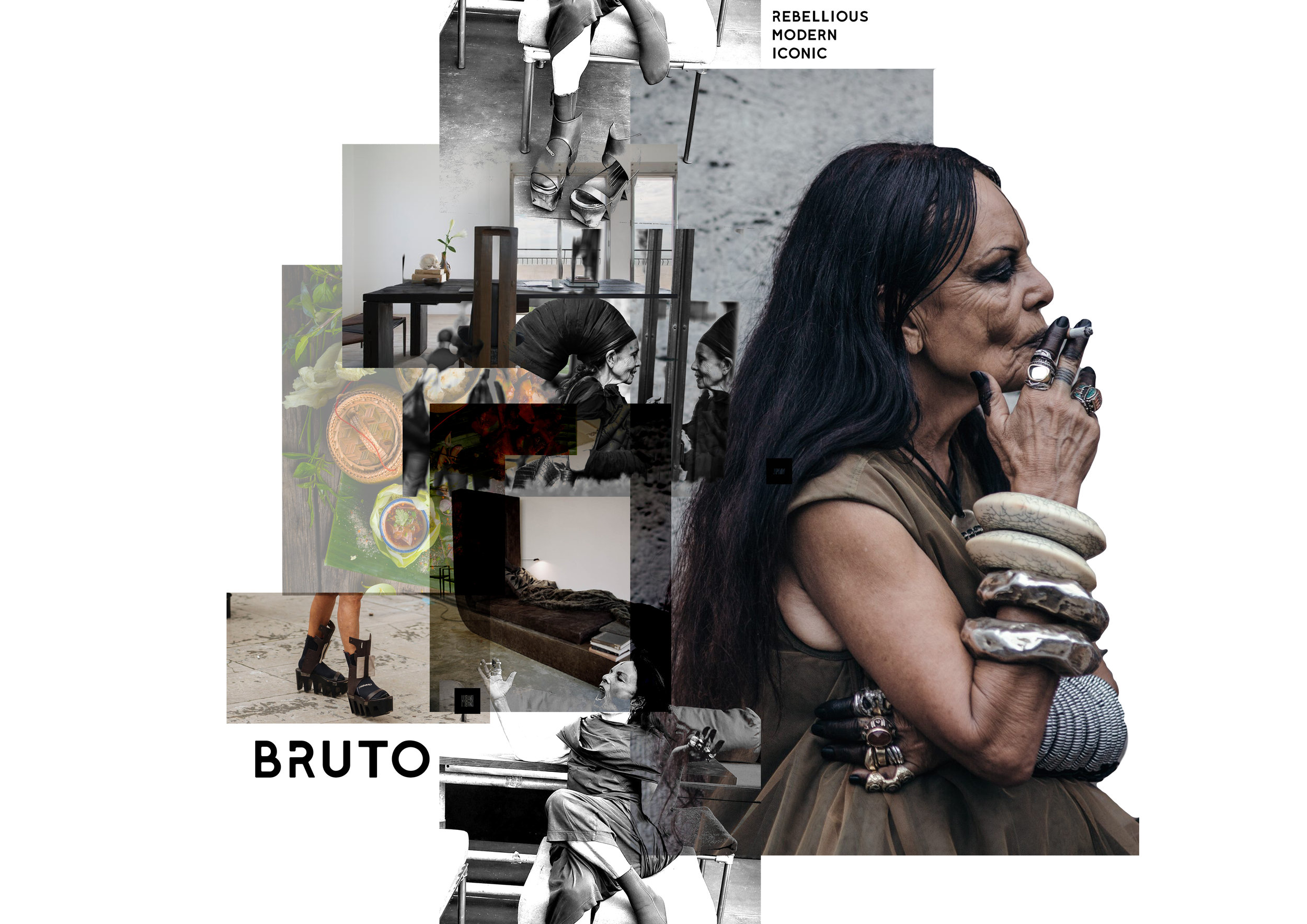
Customer


1

